- Brian
- September 26, 2023
- 8:05 am

Harry Collins
Answered on 8:05 am
100G Lambda Optics is an optical transceiver transmitting 100 gigabits per second (Gbps) of data over a single wavelength or lambda. They use a modulation technique called PAM4, which stands for Pulse Amplitude Modulation 4, to encode two bits of information per symbol. This allows them to achieve higher data rates than traditional NRZ (Non-Return-to-Zero) modulation, which encodes one bit per symbol.
100G Lambda Optics are compatible with 200G and 400G Ethernet standards, which use multiple lanes of 100G signals to achieve higher bandwidth. They can also interoperate with other 100G optics that use different modulation schemes or wavelengths, such as 100G DR (Duplex Reach), 100G FR (Four Wavelengths), or 100G LR4 (Long Reach). They can support various distances and applications, depending on the type and model of the transceiver.
- QSFP-100G-DR: 100GBASE-DR single lambda QSFP, up to 500m over duplex SMF.
- QSFP-100G-FR: 100GBASE-FR single lambda QSFP, up to 2km over duplex SMF.
- QSFP-100G-LR: 100GBASE-LR single lambda QSFP, up to 10km over duplex SMF.
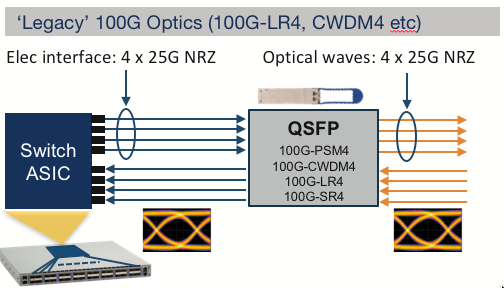
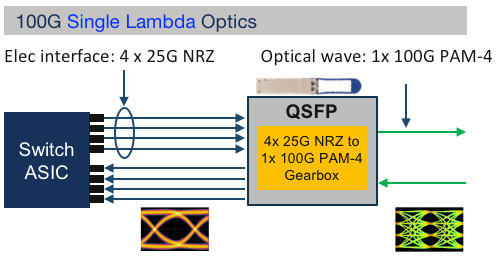
Some of the benefits of 100G Lambda Optics are:
They reduce the complexity and cost of the optical modules and the fiber infrastructure, as they use fewer components and wavelengths than other 100G optics.
They enable future-proofing and scalability of the network, as they can be reused or upgraded to new form factors or higher data rates without sacrificing performance or compatibility.
They provide operational flexibility and efficiency for data center operators, as they can connect to different types of devices and networks using the same type of optic.
People Also Ask
NVIDIA SN5600: The Ultimate Ethernet Switch for AI and Cloud Data Centers
The NVIDIA SN5600 is a cutting-edge, high-performance Ethernet switch designed to meet the demanding needs of modern data centers, particularly those focused on artificial intelligence (AI), high-performance computing (HPC), and cloud-scale infrastructure. As part of NVIDIA’s Spectrum-4 series, the SN5600 delivers unparalleled throughput, low latency, and advanced networking features, making
How Ethernet Outpaces InfiniBand in AI Networking
Ethernet Challenges InfiniBand’s Dominance InfiniBand dominated high-performance networking in the early days of generative AI due to its superior speed and low latency. However, Ethernet has made significant strides, leveraging cost efficiency, scalability, and continuous technological advancements to close the gap with InfiniBand networking. Industry giants like Amazon, Google, Oracle,
Understanding NVIDIA’s Product Ecosystem and Naming Conventions
Compute Chips—V100, A100, H100, B200, etc. These terms are among the most commonly encountered in discussions about artificial intelligence. They refer to AI compute cards, specifically GPU models. NVIDIA releases a new GPU architecture every few years, each named after a renowned scientist. Cards based on a particular architecture typically
Differences Between BA, LA, and PA in Optical Transmission
Before diving into the specifics of BA, LA, and PA, it’s essential to understand the role of optical amplifiers in general. Optical amplifiers boost the power of optical signals without converting them to electrical signals, a process that enhances efficiency and reduces latency in fiber-optic communication systems. The primary types
What Is the Minimum Bend Radius of an Optical Fiber?
The minimum bend radius of an optical fiber is defined as the smallest radius to which the fiber can be bent while still maintaining normal transmission of optical signals. In practical terms, it is the minimum curvature radius that the fiber can endure without causing excessive signal loss, modal dispersion,
AEC Active Cable Testing Solution – Deciphering AEC Performance Step by Step
With the continuous expansion of data centers and the increasing demand for high-performance computing, the AEC (Active Electrical Cable) has emerged as an effective high-speed, short-distance transmission solution. Major cloud service providers—such as Google, AWS, and Microsoft—have already embarked on large-scale deployments of AEC, while hardware manufacturers like Nvidia have
Related Articles
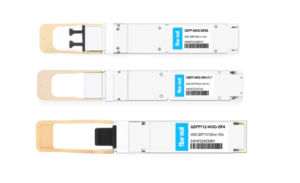
800G SR8 and 400G SR4 Optical Transceiver Modules Compatibility and Interconnection Test Report
Version Change Log Writer V0 Sample Test Cassie Test Purpose Test Objects:800G OSFP SR8/400G OSFP SR4/400G Q112 SR4. By conducting corresponding tests, the test parameters meet the relevant industry standards, and the test modules can be normally used for Nvidia (Mellanox) MQM9790 switch, Nvidia (Mellanox) ConnectX-7 network card and Nvidia (Mellanox) BlueField-3, laying a foundation for
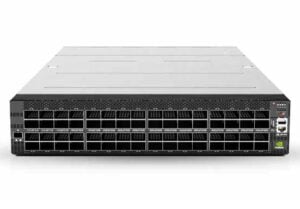
NVIDIA SN5600: The Ultimate Ethernet Switch for AI and Cloud Data Centers
The NVIDIA SN5600 is a cutting-edge, high-performance Ethernet switch designed to meet the demanding needs of modern data centers, particularly those focused on artificial intelligence (AI), high-performance computing (HPC), and cloud-scale infrastructure. As part of NVIDIA’s Spectrum-4 series, the SN5600 delivers unparalleled throughput, low latency, and advanced networking features, making
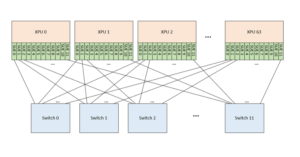
How Ethernet Outpaces InfiniBand in AI Networking
Ethernet Challenges InfiniBand’s Dominance InfiniBand dominated high-performance networking in the early days of generative AI due to its superior speed and low latency. However, Ethernet has made significant strides, leveraging cost efficiency, scalability, and continuous technological advancements to close the gap with InfiniBand networking. Industry giants like Amazon, Google, Oracle,
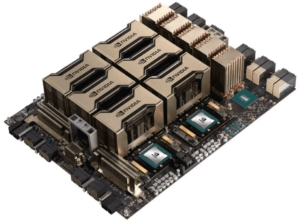
Understanding NVIDIA’s Product Ecosystem and Naming Conventions
Compute Chips—V100, A100, H100, B200, etc. These terms are among the most commonly encountered in discussions about artificial intelligence. They refer to AI compute cards, specifically GPU models. NVIDIA releases a new GPU architecture every few years, each named after a renowned scientist. Cards based on a particular architecture typically
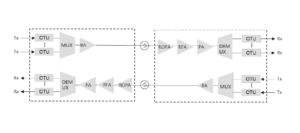
Differences Between BA, LA, and PA in Optical Transmission
Before diving into the specifics of BA, LA, and PA, it’s essential to understand the role of optical amplifiers in general. Optical amplifiers boost the power of optical signals without converting them to electrical signals, a process that enhances efficiency and reduces latency in fiber-optic communication systems. The primary types
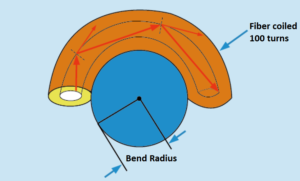
What Is the Minimum Bend Radius of an Optical Fiber?
The minimum bend radius of an optical fiber is defined as the smallest radius to which the fiber can be bent while still maintaining normal transmission of optical signals. In practical terms, it is the minimum curvature radius that the fiber can endure without causing excessive signal loss, modal dispersion,

AEC Active Cable Testing Solution – Deciphering AEC Performance Step by Step
With the continuous expansion of data centers and the increasing demand for high-performance computing, the AEC (Active Electrical Cable) has emerged as an effective high-speed, short-distance transmission solution. Major cloud service providers—such as Google, AWS, and Microsoft—have already embarked on large-scale deployments of AEC, while hardware manufacturers like Nvidia have
Related posts:
- If the Server’s Module is OSFP and the Switch’s is QSFP112, can it be Linked by Cables to Connect Data?
- Can I Plug an OSFP Module into a QSFP-DD Port, or a QSFP-DD Module into an OSFP Port?
- What is the Difference Between 400G-BIDI, 400G-SRBD and 400G-SR4.2?
- What is the 100G-SRBD (or “BIDI”) Transceiver?
